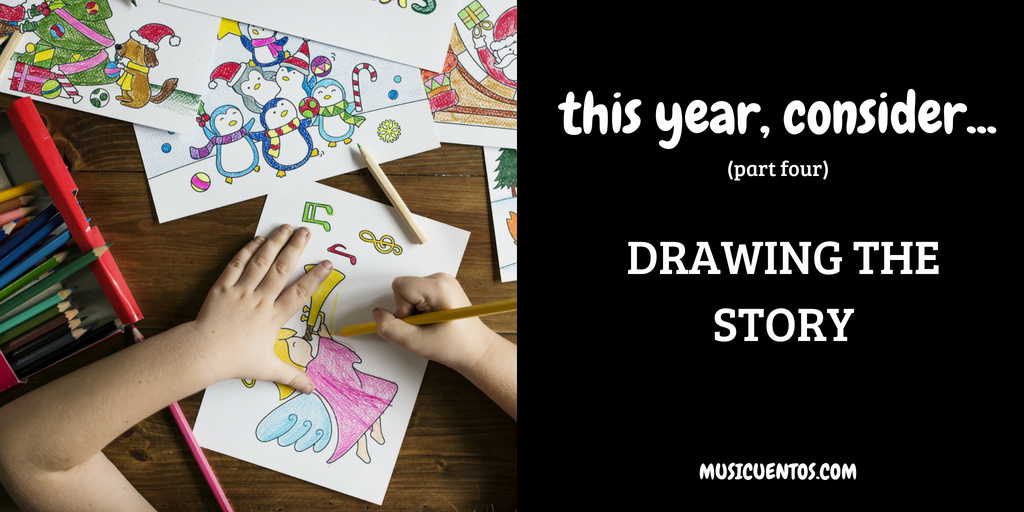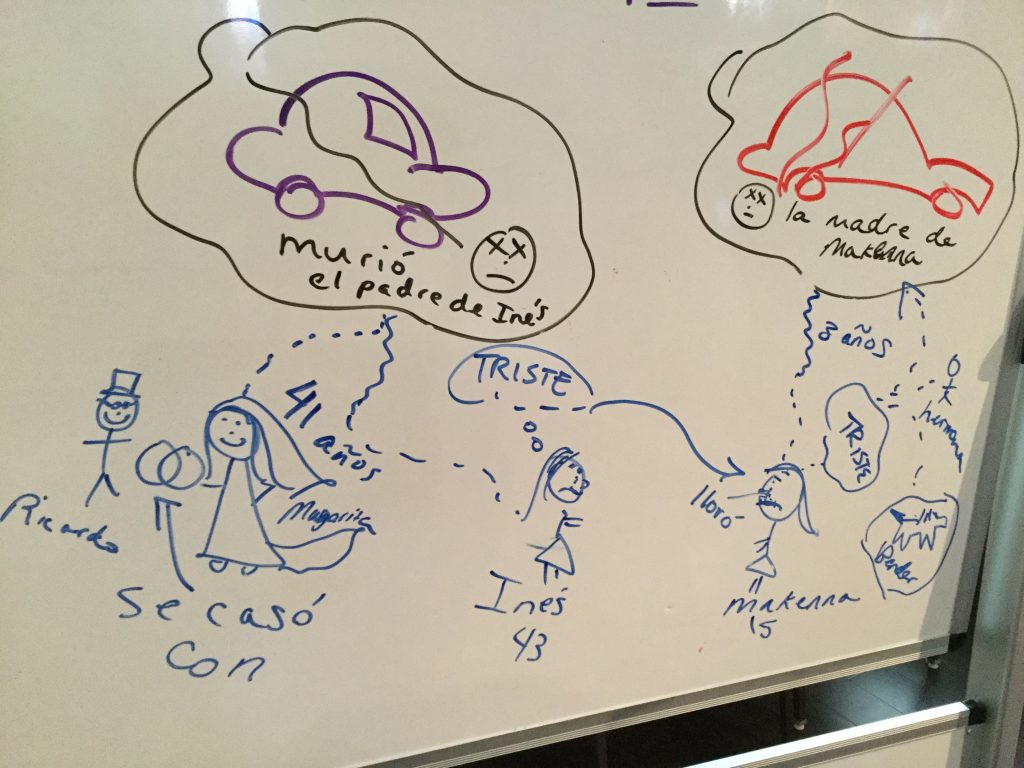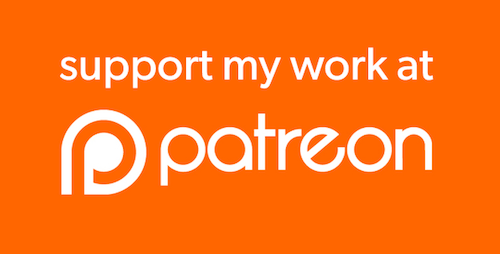This podcast on productivity was the last straw for me. Near the beginning, the host reminded me of the research on how much better the brain works when you not only see something written down, but you wrote it there.

Sacrificing a good idea on the altar of a new idea
I don’t remember when and I don’t know why we stopped drawing the story. Maybe it started when I first assigned the job of Story Scribe. Well, of course I should. Alan November told me to have a scribe. Teachers following Ben Slavic’s and Bryce Hedstrom’s expert guidance were also putting classroom jobs to work in amazing ways.
Like so many bandwagons that carry other groups of learners quite well, in my freestyle tiny group of mixed-age kiddos, this classroom jobs thing broke down. Maybe the issue for me was I simply didn’t have enough jobs, or the creativity to come up with enough. I don’t collect homework, I don’t take attendance, I don’t even have a door.

Then, there was the push for the desk-free classroom. I try to be one that “blogs beyond the bandwagons,” but that doesn’t mean declaring the bandwagon is bad, just that often I’ll try them out, discover a different wagon gave my learners a better ride (or more often, a hybrid wagon!), and then try to be brave enough to express that sometimes unpopular opinion. I ended up with a bit of a hybrid that had kids at tables for stations activities and in a deskless semicircle for stories and reading, and this left us feeling any kind of writing or drawing was inconvenient. If you’re replacing the desk with a clipboard, what’s the point?
Sacrificing a good idea on the altar of a new idea is often a bad idea.
Or maybe the issue was that we started basing our semester units on a class novel, so I wasn’t coming up with stories on my own for a while, and we fell out of the habit. Or maybe it started way back when my attempt at the interactive notebook bandwagon was such an epic fail that I gave up on requiring the composition notebook at all.
Remembering the ears can’t do it all
We go in cycles so often, don’t we? I started to remember how powerful it was for learners to draw when we started mind mapping vocabulary in response to persistent parent requests to help one struggling girl improve her vocabulary acquisition.
Let me remind you of a quote from the great memory research book Make It Stick:
Humans remember pictures more easily than words. (For example, the image of an elephant is easier to recall than the word “elephant.”) So it stands to reason that associating vivid mental images with verbal or abstract material makes that material easier to retrieve from memory.
Let me also remind you of the Brain Rule that
Vision trumps all other senses.
and
Hear a piece of information, and three days later you’ll remember 10% of it. Add a picture and you’ll remember 65%.
But research has also found that the eyes can’t do it all. Let’s go further. Why should learners draw their own pictures?
- “For more effective studying, take notes with pen and paper.”
- “Writing things down appears to help us remember the important stuff.“
- “Writing by hand appears to improve our ability to remember things.”

These aren’t just words to me – I saw this. I look back and remember how much better and faster my learners could recall targeted vocabulary when we were drawing stories and I could kick myself for letting this slip away.
Back to the drawing board – with powerful bonus benefits
This semester my younger class is back at the novel unit with El Ekeko and Bolivia, and we’re going back to the drawing board. We’ll try 1) drawing each chapter in one drawing, and 2) labeling the drawing with 5 phrases that capture the essence of the action. Just in the first couple of meetings of the year, I’ve been reminded of a surprise benefit: it slows me down and ups our repetition. Why is that good, you ask? In order to make sure everyone gets the story drawn, I have to know that every single learner has processed what’s going on and is ready to move on before I go to the next piece. And in that time, while I’m waiting, I get to repeat and reinforce the beginning, after some pauses, and the kids don’t wonder why I’m repeating myself or complain about being bored. How’s that for powerful benefits?
My older class is taking a break from novels to work on developing a message about buying fair-trade coffee and spreading it around Louisville’s coffee shops. (Keep an eye out for resources related to my novice PBLL unit, “Coffee, Fair Trade, and Me.”) But in my approach to novice PBLL, we have to preface the project work with a whole lot of comprehensible input. We’ll be drawing it.
This post is about a lot of things I tried and failed at. But don’t feel any discouragement coming from me. I’m glad I tried those many strategies to discover that in my class, with my group of learners, what we really need is to go back to what was working so well before: a composition notebook and colored pencils are key school supplies, and we all need to draw the story.
 If Musicuentos has significantly helped you in your language teaching journey, consider becoming part of the “thanks” crew on Patreon. “La lotería” patrons receive every resource I produce, whether it’s a $2 activity or a $50 ebook guide, as thanks for their sponsorship.
If Musicuentos has significantly helped you in your language teaching journey, consider becoming part of the “thanks” crew on Patreon. “La lotería” patrons receive every resource I produce, whether it’s a $2 activity or a $50 ebook guide, as thanks for their sponsorship.
5 Comments
Comments are closed.



Hi Sarah-Elizabeth,
I appreciate you sharing your thought process and your commitment to find what works best for you and your students, rather than just riding the latest trends. I teach K8 FLEX Spanish so I am always trying to focus in on the routines and strategies that most effectively reach my students in the limited time I get with them. All of these decisions are highly dependent on many class variables, so I whole-heartedly agree that there is no one right answer for every teacher! Just wanted to share a thought on using clipboards rather than desks. I find that the clipboards allow me to remove some of the distance and obstructions that might hinder me and my students from interacting with each other while still providing a way for them to write and draw. Works for me, may not work for others. Thanks for all your work to help the WL teaching community grow and share together!
Thank you for sharing another way, Jessica! I thought about trying clipboards but thought the new roadblock for me would be where to put the colored pencils (my kiddos draw with colored pencils). Where do your learners keep útiles like pencils, etc?
We usually just put several pencil boxes on the floor and students gather around and share or use their own box, depending on how the classroom teacher organizes their supplies. I roam to other classrooms so I don’t have much control over the way desks, tables or supplies are arranged. Maybe that’s why clipboards work better for me, as most classrooms I teach in are not set up the way I might prefer.
That makes sense!
[…] thing I did was to tell the story with my comprehensible sentences. I used a combination of drawing the story and using news photos in […]